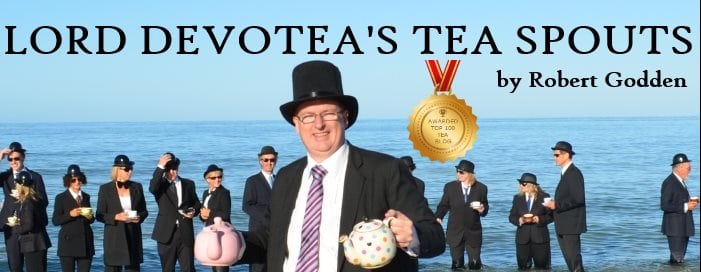
Series Note: the penultimate installment in my self-indulgent series that covers all our blends and what inspired them. If you’ve got this far, well done you. This is Part VI.
I read a lot of tea books, and the origins of Earl Grey tea are a bit unclear. And not really within the scope of “our ” stories.
It’s the only ‘standard” tea we have.
People know what an Earl Grey is. Ours is strong, and called “Special Earl Grey”.
We introduced it due to demand from the venues who stock our tea.
Sometimes you just have to go with the flow. It’s only available in our Australian store at this point.

Persian Princess, on the other hand is most definitely unique.
I read quite a bit about various countries, and one of them is Iran, or as it was known more or less forever, Persia. It has been a very different place over the millennia to what it is now. Labelled as barbarians by the Ancient Greeks – of whom history has a misty-eyed view of handsome men and women lounging about in their nightclothes inventing democracy – the Persians actually invented a lot of good stuff, like some really neat maths, the best ways to cook eggplant, the earliest lutes, and most excitingly of all to tea lovers, the biscuit.
It was in historical texts that I first came across the habit of drinking tea over a sugar cube held in the mouth. I found that endlessly fascinating. I even shot a video about it.
I also find the samovar a fascinating way to make tea. Stupidly strong tea, brewed to a nonsensical sludge, with clear boiling water added to dilute it to just the strength you like.
And then sipped over rock sugar, like the cubes you see in the picture. Can’t figure out why it’s actually delicious.
The tea itself is a nice, strong black blend. It has to be, to stand up to such treatment.
It’s one of the original four teas we launched with, back a few years.
It’s a popular choice from our US store, possibly due in part to this simply wonderful blog about it , and it’s also available from our Aussie and UK stores.

The origin of Two Tigers is pretty simple. One day we had a friend over who loved a certain single origin tea. I was halfway though making a pot but ran out of tea, so I simple mixed another I had handy.
It was an instant hit.
After we’d served it exclusively to that friend for a few months, Lady Devotea suggested we make it available to all. The name Two Tigers came about from a newspaper article about “Asian Tiger Economies” that was lying about whilst we were refining it. India and China were the economies listed, and that’s the origin of the teas in question.
It’s available in our US, UK and Australian Stores.

Seaside Rendezvous is a tea that had its own news item on our online store hub, so I won’t recap its origin. With the current release of The Great Gatsby, Deco is quite popular right now and this is Deco-inspired tea.
Of course, I’ve had a bit to say about this elsewhere, so for now, I’ll just say black blend, aimed to taste circa 1932, and only available from the Australian store as I write this.
We need to go back a couple of decades for the last tea we’ll discuss today: 1910
It is often called ‘1910 Traditional Premium English Breakfast’ as that was its original name. But it’s just 1910 now.
When we were creating our blends, we were adamant that our English Breakfast need to taste authentic and old-fashioned.
I found a book from 1910 that made a passing reference to English Breakfast being ‘an admixture of teas from China, India and Ceylon” and we set about making the best English Breakfast we could on that simple principle.
It’s a good seller in the tea shops that stock our teas, and it’s still something we drink all the time ourselves. It’s available in the UK, US and Australia.
After a bit of a marathon, that’s nearly all our teas explained. Only the chais remain.
I’ll refill my Persian Princess pot and get cracking.


Sometimes, it seems inspiration just struck you out of a sudden.
It is either that or you being really, really lucky.